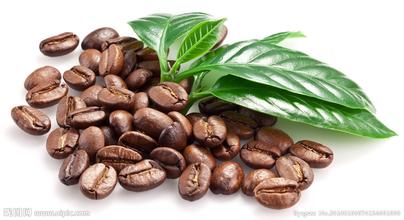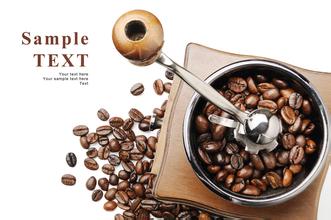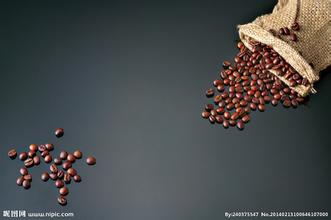Introduction to the characteristics of Manor Brand and Regional treatment of graded production of Coffee beans in Kenya
Introduction to the characteristics of Manor Brand and Regional treatment of graded production of Coffee beans in Kenya
Kenya is a well-known producer based on the size of coffee beans. Usually divided into nine grades, according to the bean type, there are PB, that is, round beans, accounting for about 10% of the total output, in addition to E (elephant beans), AA, AB, C, T, TT, MH, ML according to size.
Coffee related institutions in Kenya
KCPTA: Kenya Federation of Coffee producers and traders, although the Kenya Coffee Producers and Traders Association coffee auction system effectively increases the price of high-quality coffee, it is not without drawbacks. First, the existence of many trade middlemen erodes the interests of coffee farmers, and the high prices obtained from the auction can not be fully fed back to hard-working coffee farmers. Second, it is difficult to trace the production information of auctioned coffee. For the booming boutique coffee market, traceability is an important criterion for the evaluation of raw coffee beans. Based on the above factors, the Kenyan government has begun to relax restrictions on direct trade in coffee. Agents certified by the state can sell coffee beans directly to customers such as foreign boutique coffee roasters. Direct trade can give farmers who produce high-quality coffee more rewards.
Mainly by large farms (Estate) and cooperatives (Cooperatives) two types. The former generally has a large planting area and has independent coffee processing facilities. Most coffee production is done by a large number of small farmers, who form coffee cooperatives. The Coffee Cooperative Society employs special managers to supervise the coffee processing of its members, even to the point of managing each coffee tree.
Compared with shading planting in many high-quality producing areas, Kenyan coffee is obviously more spicy and unrestrained, and shade trees are not common. In addition, Kenyan coffee rarely participates in certification, variety and environmental factors make the use of pesticides necessary, and organic certification, which is popular in other countries, becomes rare in Kenya.
Kenyan coffee harvest season
There are two harvest seasons in Kenya, the main harvest season is from October to December and the secondary harvest season is from May to July.
Kenyan coffee processing
Large farms usually have independent treatment facilities. A large number of small farmers usually pick ripe coffee fruits by hand. Coffee picking is a labor-intensive job that requires the whole family to deploy and even hire workers during the harvest season. The fresh fruit of the picked coffee needs to be delivered in time to the cooperative-owned coffee processing plant for pulping, which may be carried by ox carts, pick-up trucks or trucks. After peeling, the shell bean (Parchment coffee) is sent to a privately owned factory for shelling treatment after being briefly kept in the cooperative's processing plant.

Important Notice :
前街咖啡 FrontStreet Coffee has moved to new addredd:
FrontStreet Coffee Address: 315,Donghua East Road,GuangZhou
Tel:020 38364473
- Prev

Introduction to the characteristics, flavor and taste of coffee beans in Tanzania
The characteristics of Tanzanian coffee beans, taste, taste, manor production, regional treatment, Tanzanian coffee has also been developed in the hands of German and British colonists, and has long been loved by Europeans and squeezed into the ranks of famous products. The most favorable factors that make Tanzanian coffee famous are Hemingway and his novels. Since Hemingway embarked on his career as a writer in France
- Next

Flavor description of Costa Rican Tarazhu Coffee Bean introduction to the grinding scale of varieties produced in different regions
Description of the flavor of Costa Rican Tarazu coffee beans the grinding scale of the varieties introduces that Costa Rican coffee has obvious acidity, strong acidity but not irritation and good divergency. the whole mouth will be filled with this kind of fruit-like sweet and sour aroma. The bitterness is not very obvious, but it has a beautiful return. No astringent taste, the overall taste is very pure and balanced, let
Related
- Detailed explanation of Jadeite planting Land in Panamanian Jadeite Manor introduction to the grading system of Jadeite competitive bidding, Red bid, Green bid and Rose Summer
- Story of Coffee planting in Brenka region of Costa Rica Stonehenge Manor anaerobic heavy honey treatment of flavor mouth
- What's on the barrel of Blue Mountain Coffee beans?
- Can American coffee also pull flowers? How to use hot American style to pull out a good-looking pattern?
- Can you make a cold extract with coffee beans? What is the right proportion for cold-extracted coffee formula?
- Indonesian PWN Gold Mandrine Coffee Origin Features Flavor How to Chong? Mandolin coffee is American.
- A brief introduction to the flavor characteristics of Brazilian yellow bourbon coffee beans
- What is the effect of different water quality on the flavor of cold-extracted coffee? What kind of water is best for brewing coffee?
- Why do you think of Rose Summer whenever you mention Panamanian coffee?
- Introduction to the characteristics of authentic blue mountain coffee bean producing areas? What is the CIB Coffee Authority in Jamaica?

